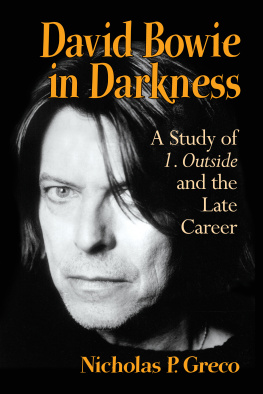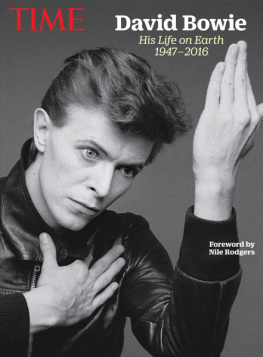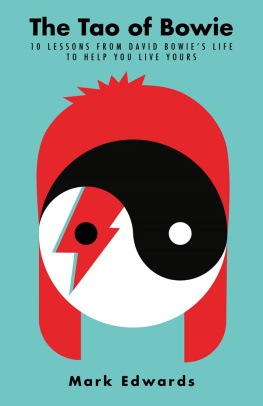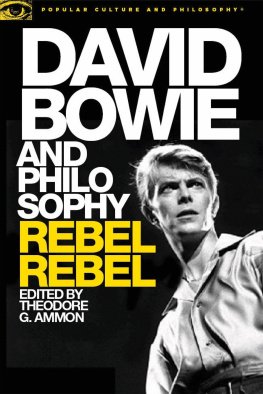
David Bowie in Darkness
A Study of 1. Outside and the Late Career
NICHOLAS P. GRECO
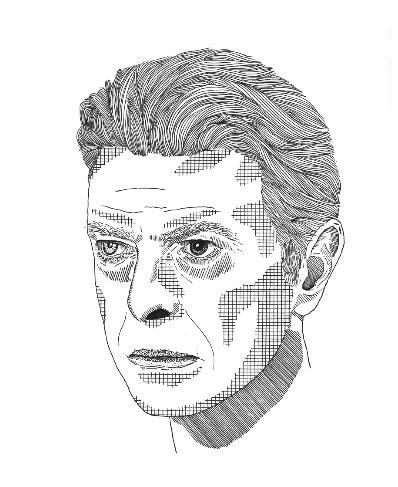

McFarland & Company, Inc., Publishers
Jefferson, North Carolina
Also by NICHOLAS P. GRECO
Only If You Are Really Interested: Celebrity, Gender, Desire and the World of Morrissey (McFarland, 2011)
Title page: David Bowie (by and used by permission of Tamara McKenzie).
LIBRARY OF CONGRESS CATALOGUING DATA ARE AVAILABLE
BRITISH LIBRARY CATALOGUING DATA ARE AVAILABLE
e-ISBN: 978-1-4766-2194-4
2015 Nicholas P. Greco. All rights reserved
No part of this book may be reproduced or transmitted in any form or by any means, electronic or mechanical, including photocopying or recording, or by any information storage and retrieval system, without permission in writing from the publisher.
Cover Image: David Bowie Photofest
McFarland & Company, Inc., Publishers
Box 611, Jefferson, North Carolina 28640
www.mcfarlandpub.com
To Serafina and Antonella.
Acknowledgments
I would like to thank Dr. Susan Fast, Dr. Ken McLeod and Dr. Fred Hall for their guidance when I was writing the earliest drafts of chapters 2 through 6. Critical to my development as a young scholar was the guidance of the music faculty at McMaster University in the late 1990s; in particular, I would like to thank Dr. James Deaville and Dr. Hugh Hartwell for their support and encouragement throughout those early days.
I must mention, with gratitude, my colleagues at Providence University College, especially Dr. Michael Gilmour, whose help, advice and friendship have been invaluable throughout this process. I thank Cameron McKenzie, the academic dean of the University College, for granting me a sabbatical in order to complete this manuscript. He is a superior, but also a colleague and a dear friend. I have added the name of Dr. Randall Holm here because, if I failed to mention him, he would be sad. I am pleased with the drawing of Bowie by Tamara McKenzie, which now hangs in my office.
Finally, I am grateful for the correspondence with Bowies guitarist, Reeves Gabrels, who was kind enough to respond to emails and messages from a fan-scholar. His insight into Bowies world is a wonderful resource.
Preface
This book focuses on the destruction of the early David Bowie persona. That very destruction takes place during his later career; this book explores Bowies negotiation of his celebrity during this period, with a particular focus on an album that he released in 1995 entitled 1. Outside. It is the symptom of a break in his career, a break that occurred in or around 1988.
Bowies later career can be mapped out in the following way, and this is how this book will treat his career. In 1983, Bowie released Lets Dance, marking the beginning of a period of unprecedented commercial success. This is also a period during and after which Bowie experienced truly global success, leading to his status as global celebrity. In 1984, the documentary film Ricochet was released, packaged with the concert video for the Serious Moonlight tour. The documentary focuses on the Asian leg of Serious Moonlight in late 1983, which included stops in Singapore, Thailand and Hong Kong. In 1988, Bowie collaborated with guitarist Reeves Gabrels on a remix of the single Look Back in Anger. The original track appeared on 1979s Lodger, produced by Brian Eno. In 1992, Bowie released Black Tie White Noise. During this period, Bowie renewed his relationship with Brian Eno and began considering how to approach the creation of future music. In 1995, Bowie released 1. Outside, an album that acts as a focal point of this later period. Furthermore, more than any other artifact from his career, 1. Outside characterizes Bowies state as celebrity during this later period. Theoretically, the album is symptomatic of a deep-seated anxiety, both in the form of Bowies star image and of Western society at large. What can be read as a reflection of societal anxiety becomes a reflection of a sort of personal anxiety. From 1997 to 2003, Bowie released a group of albums that include Earthling, hours,Heathen and Reality, marking the end of a period of his career. Some of these albums recall his previous material: while hours shows Bowie attending to a dead version of himself, indicating the death of his 1990s persona, Heathen revisits some of the darker themes of his 1. Outside album. In 2004, Bowie became a recluse, with very few examples of artistic production. Unexpectedly, in 2013, Bowie released The Next Day, and in 2014, he released the single Sue (Or in a Season of Crime) and its companion piece Tis a Pity Shes a Whore.
Chapter 1 explores the latter half of Bowies career through case studies that elucidate the notion that Bowie is a celebrity who negotiates this stage of his career in a particular way. Bowie requires an audience for his continuance as a celebrity, but works against that audience in the creationor, rather, the destructionof his star image. Chapters 2 through 6 look in detail at his 1. Outside album, an anchor and representative work of this period.
Introduction
David Bowie is a chameleon, an artist who sheds his present persona to create a new one. This is what keeps Bowie popular, relevant and compelling. Or so one might think. Rather, Bowie is an artist who is able to work with the resources around him to create something new. In fact, he has been extremely successful in doing so, causing many people to see him as a sort of lone artist rather than a collaborator in the creation of the celebrity entity known as David Bowie. But there is something else: Bowie does not always create. He also destroys. And he has been destroying since the middle of his career.
In the early 1980s, Bowie received much commercial success with Lets Dance, and continued successes with Tonight and Never Let Me Down, though the latter two albums were met with less than stellar critical reception. In a way, this forced Bowie to reconsider his musical journey, which is made clear by his collaboration with guitarist Reeves Gabrels and the formation of Tin Machine, a band that produced a trio of albums from 1989 to 1992. He returned to stabilitythat is, the mainstream of popular musicwith the jazz-infused Black Tie White Noise in 1993. Black Tie White Noise afforded Bowie some commercial success, presenting a sanitized and overproduced version of the singer after the rougher-sounding Tin Machine recordings, even if Black Tie features Bowie holding a cigarette on its cover. The album also betrays a darker, alienating side of the singer.
The alienation hinted at in Black Tie White Noise comes to a head with 1. Outside, an ambitious project featuring an often disjointed narrative accompanying often disjointed and jarring musical soundscapes. In support of the album, Bowie embarked on a tour he co-headlined with Nine Inch Nails, a band which, at that time, was firmly entrenched in industrial music, a sort of amalgamation of metal and electronic music, and almost anathema to Bowies
Next page
